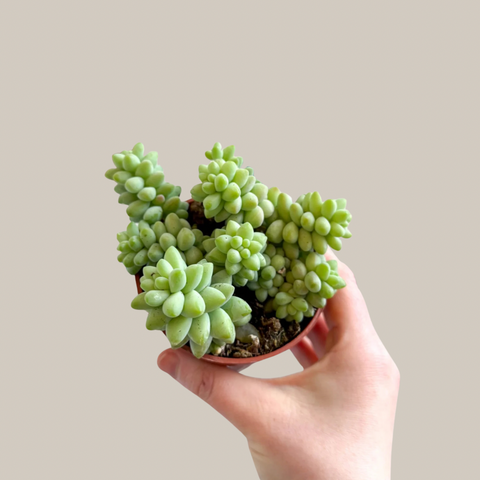Flamingo Flower (Anthurium andreanum) Care Guide: Keep Your Indoor Flamingo Blooming Bright 🌺
With its glossy, heart-shaped leaves and striking waxy flowers (called spathes), the Flamingo Flower—also known as Anthurium andreanum—is a bold and beautiful houseplant that adds a tropical vibe to any indoor space. Native to the rainforests of Colombia and Ecuador, this plant is admired for its long-lasting blooms and dramatic foliage.
In this guide, you'll learn everything you need to keep your Anthurium thriving—whether you're a beginner or a seasoned plant lover.
🌸 Quick Overview
- Botanical Name: Anthurium andreanum
- Common Names: Flamingo Flower, Laceleaf, Painter’s Palette
- Native To: Colombia & Ecuador
- Light Needs: Bright, indirect light
- Watering: Keep soil slightly moist but not soggy
- Pet Safety: Toxic if ingested (keep away from pets & children)
☀️ Light Requirements
The Flamingo Flower thrives in bright, indirect light. It will tolerate lower light levels, but blooming may slow or stop altogether.
🌤️ Tip: A north or east-facing window is ideal. Avoid direct midday sun which can scorch leaves.
💧 Watering
Water your Anthurium when the top 1–2 inches of soil feel dry. These plants like a consistently moist but not soggy environment.
- Use lukewarm, filtered or rain water if possible.
- Empty saucers after watering to prevent root rot.
- Reduce watering frequency during colder months.
⚠️ Signs of overwatering: Yellowing leaves, soft stems, moldy soil.
⚠️ Signs of underwatering: Crispy edges, drooping leaves.
🪴 Best Soil & Potting
Flamingo Flowers love an aerated, well-draining soil mix. A mix designed for orchids or aroids is perfect.
DIY Soil Mix:
- 1 part peat moss or coco coir
- 1 part orchid bark
- 1 part perlite or pumice
Repot every 1–2 years, or when roots start growing out of the pot.
💦 Humidity & Temperature
Being tropical, Anthuriums crave high humidity and warmth. Aim for:
- Humidity: 60–80%
- Temperature: 18–27°C (65–80°F)
If your home is dry, consider a humidifier or a pebble tray. Misting can help but avoid wetting the flowers directly.
🌿 Feeding & Fertilising
Feed your Flamingo Flower during the growing season (spring to early autumn) with a balanced, diluted liquid houseplant fertiliser.
- Fertilise once a month in spring and summer.
- Reduce or stop feeding in winter when growth slows.
🌱 Propagation
The easiest way to propagate Anthurium andreanum is through division when repotting.
- Gently remove the plant from its pot.
- Separate sections of the root system, ensuring each has leaves and roots.
- Pot into fresh soil and water lightly.
You can also propagate via stem cuttings with aerial roots, but this requires more care and patience.
🚨 Common Problems
- Brown Tips: Often caused by low humidity or over-fertilising.
- Yellow Leaves: Could be due to overwatering or low light.
- No Flowers: Check for adequate light, humidity, and fertiliser. These are the three keys to blooming success.
🌟 Bonus Tips for a Happy Flamingo Flower
- Wipe the leaves occasionally with a damp cloth to remove dust.
- Rotate the plant every few weeks to encourage even growth.
- Remove spent blooms to encourage new ones.
- Don't repot too frequently—they bloom best when slightly root-bound.
Final Thoughts
The Flamingo Flower is a rewarding houseplant that adds colour and elegance to your space. With the right care, it will bloom repeatedly and thrive for years. If you're looking for a low-maintenance tropical with show-stopping flair, Anthurium andreanum is a fantastic choice.



